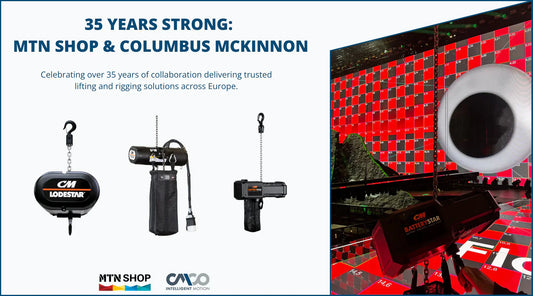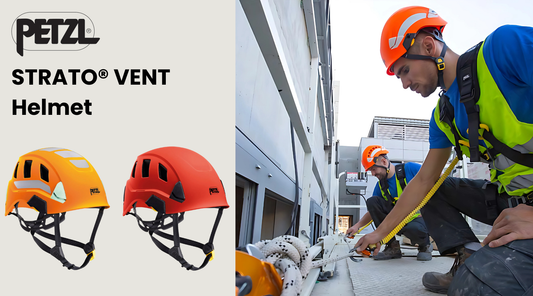How to Properly Inspect Your Safety Helmet
Article
No matter the industry or the sport, safety helmets and hard hats play an important role in safety. When it comes to entertainment rigging, forestry, and professional and recreational rope access, helmets are a major component of personal protective equipment (PPE). However, for a helmet to do its job properly, you must take the necessary steps to make sure it’s in proper working order. In this post, we cover the basics on how to correctly inspect your work helmet.
Step 1: Know your helmet’s history
The first step to helmet inspection is simple: get to know the history of your product, including knowing where the helmet has been stored. This is a key point because extreme conditions can jeopardize the protective purposes of the helmet. Other factors that play a role in getting to know your helmet are knowing how old the helmet is, any potential modifications made to the helmet, and if the helmet had been involved in a previous impact or fall arrest.
Step 2: Make preliminary observations
Once you know the history of your helmet, it is time to make some preliminary observations. While making these observations, you are going to want to check the serial number and CE mark. By doing this, you are confirming that you have an authentic piece of hardware that will protect you. Another thing you need to look for is an indication of how old the helmet is. This is important because depending on the manufacturer, they recommend replacing helmets at different time variables. The final thing to look for in this step is to compare the old helmet to a brand new one. You will want to do this to make sure there were no modifications or missing elements to this helmet.
Step 3: Inspect the helmet’s shell
Once you’re familiar with the helmet, it is now time to check the shell. You want to make sure that there are no marks, impacts, deformations, cracks, burns, wear, or signs of chemical products. If you notice any of these things, remove the hard hat from service immediately.
After examining your safety helmet’s outer shell, it is time to inspect the inner shell. When examining the inner shell, you want to look for things such as marks, cracks, deformations, or missing parts. If any of the following has occurred, remove the helmet from service.
Note: Do not remove the liner attached to the shell during this inspection! Checking the ventilation holes and slots is crucial. This can sometimes be overlooked; however, making sure there are no cracks and the ventilation slots function properly is a necessary feature of the helmet’s safety.
Step 4: Check the protective helmet liner
This is a very simple yet very important factor in helmet inspection. In this step, you need to check the liner. You will want to look for things like cracks, marks, and missing parts. It is ok in this step to remove comfort pads to better look for potential damage, but you should not remove the liner attached to the shell.
Step 5: Inspect the webbing
In this step, you will want to check the “cradle” or the webbing of the helmet. When doing this, you will need to look for things such as wear, cuts, burns, and the deformation of plastic pieces within the helmet. If any of the following has occurred, please remove the helmet from service.
Step 6: Examine headband and attachments
Now it’s time to examine the headband as well as headband attachments. You will be searching for things such as wear, deformation, and missing pieces. If it is necessary, remove the foam or comfort pads to get a better look.
Step 7: Ensure the adjustment system works
The next thing you will want to check is the adjustment system. When examining the adjustment system, you need to make sure it functions properly. This would mean the crank moves in both directions smoothly, and the device is not missing any pieces.
Step 8: Check the helmet’s chin straps
In this step, you will want to check the chin strap to make sure all the pieces are there and that they lock properly. You can check this by clipping the clasps together then lightly pulling to make sure the clasp does not pull apart. Once that is completed, you will need to make sure all the straps have no wear or damage to them and that the plastic clasps are free from breaks or cracks. If any of the following happens to your helmet, it is unusable.
Step 9: Inspect comfort foam
A hard hat’s comfort foam is another key safety component that can wear out from use. When inspecting this component, look out for missing chunks or flaking material. If this occurs, it is time to replace them. If the material is dirty or looks crusty, all you may need to do is wash them. If you suspect that the foam pads are just dirty, wash them and re-examine.
Step 10: Examine all additional accessories
Headlamp clips are essential to some workers or mountain climbing enthusiasts, depending on the conditions you are in. Headlamp clips are also an important piece to a helmet too, so it is very important to examine them to make sure they are in good shape. To do this, you want to check for deformation or missing parts. If you do run into this issue, they need to be replaced.
If you have any additional accessories on your safety helmet, such as face shields, you will need to examine those before use, as well. When examining these, make sure that the accessory isn't in horrible condition or causing damage to the helmet.
Replacing your safety helmet
When it comes to safety helmets and maximum protection when in doubt, throw it out, if your helmet or hard hat has been impacted by a fall or has exceeded the manufacturer’s suggested timeline for use, it is time to replace it. At MTN Shop, we carry a wide variety of helmets from leading brands such as PMI, Petzl, Kong, Kask, Arborwear, and 3M DBI-SALA. Whether you’re looking for an industrial hardhat or something you can wear to scale a rockface, we’ve got you covered.
Also, don't forget to visit our YouTube Channel and watch all KASK product videos.





